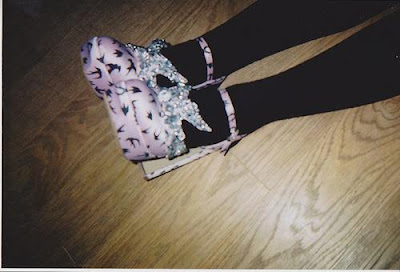 GENTLEMEN who prefer Ed Hardy shirts, those dragon-happy hallmarks of “Jersey Shore” chic, will not be getting into the Mulberry Project, the subterranean speakeasy cocktail lounge in Little Italy, any time soon. If you prefer your dress shirts colorful and boldly striped, don’t bother with the club Provocateur, in the meatpacking district. Baggy, low-slung jeans your style? Lots of East Village bars may be O.K. with that, but there will be no Continental for you tonight.
GENTLEMEN who prefer Ed Hardy shirts, those dragon-happy hallmarks of “Jersey Shore” chic, will not be getting into the Mulberry Project, the subterranean speakeasy cocktail lounge in Little Italy, any time soon. If you prefer your dress shirts colorful and boldly striped, don’t bother with the club Provocateur, in the meatpacking district. Baggy, low-slung jeans your style? Lots of East Village bars may be O.K. with that, but there will be no Continental for you tonight.Dress codes have long been the secret language of New York City night life; fluency can mean the difference between an epic night out and a humiliating kick to the curb. “There’s nothing that dresses a room like a crowd,” said Ian Parms, an owner of the Mulberry Project. “The ambience of the experience is the people around you, so it’s important for us to keep those people fashion-forward and eclectic and interesting and engaging.”
Beyond being inherently snobbish, such selectivity has invited charges of racism. In December, the New York City Commission on Human Rights opened an investigation (still in progress) into the Continental, a sports bar in the East Village on Third Avenue, for its “no baggy jeans or bling” policy, which civil rights groups called a barely concealed ploy to keep out blacks. Trigger Smith, the owner of the Continental, denied that he was trying to exclude people of a certain race. “It just so happens that more minorities wear these” kinds of clothes, he told The New York Times in January. “There isn’t a racist bone in my body.” One reason some may have found the Continental’s policy hard to swallow is the bar’s otherwise obvious lack of interest in fashion. On a typical Saturday night, the Continental’s mixture of frat boys and barflies sports an unironic mélange of ripped blue jeans, grubby backpacks, baseball hats and sneakers. (And for what it’s worth, the crowd was about 30 percent black on a visit in April.)
But Mr. Smith’s defense illuminates a truth about dress codes at even the most exclusive velvet-roped clubs: they are frequently intended to keep out a certain type of person. The clothes themselves are secondary.
Michael Satsky, proprietor of Provocateur, at the Gansevoort Hotel (but now on a brief summer hiatus), admitted that he strived to keep his bar free of the randy bridge-and-tunnel boys who prowl the neighborhood on weekends. Luckily for him, they apparently self-identify through their shirts.
“We do not do plaid, and we don’t do stripes,” he said. The ideal Provocateur guest “doesn’t have to wear crazy stripes on his shirt to draw attention to himself.” (Plaid was just fine, however, at the closing night of Beige in the East Village a few months ago, where nearly every fashionable gay man who showed up seemed to be clad in a gingham shirt.)
Mr. Satsky suggests that his male patrons wear “a blazer, a solid button-down or a solid sweater.” For women, shoes are key. “Minimum five-inch heel,” he said. “Christians are our favorite,” he added, referring not to the faithful but to Christian Louboutin, the designer known for his red soles. Jimmy Choo and Christian Dior are also welcome. If the crowd in Provocateur on any given night is a gauge, being European, gorgeous and at least 5-foot-10 is good, too.
An injunction against flannel, shorts and other typical brunch fashions helps convey the message that the sparklers-and-champagne bacchanal known as the Day and Night Brunch, which until June was held at the Plaza, is for socialites and financiers, not hotel guests in search of French toast, said Daniel Koch, who runs the weekly party with his twin brother, Derek.
“You get guys in from L.A., they think a brunch is a brunch,” Mr. Koch said. “We have to say, ‘Look, dude, this isn’t what you think it is.’ You can’t rock a T-shirt here unless you’re a rock star.”






























